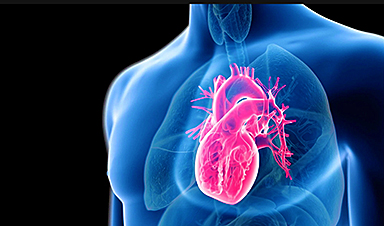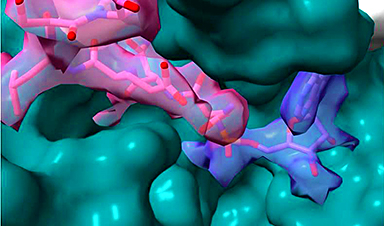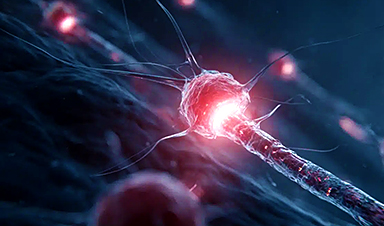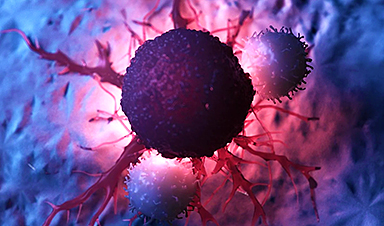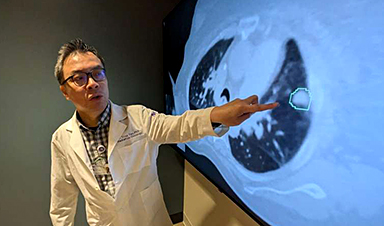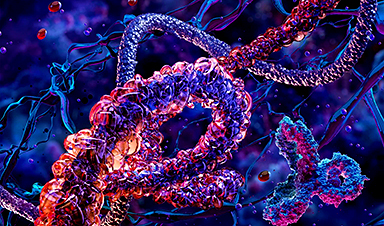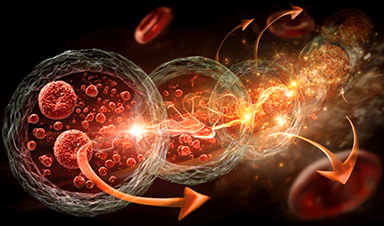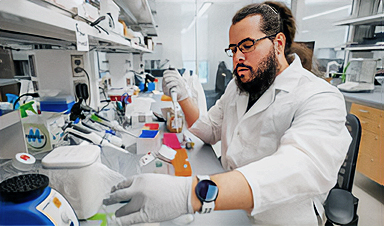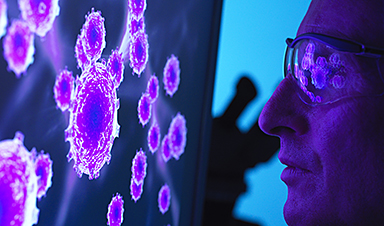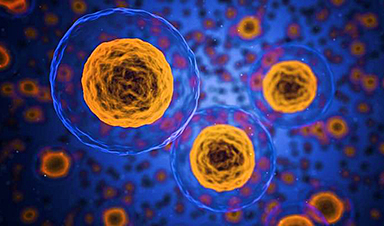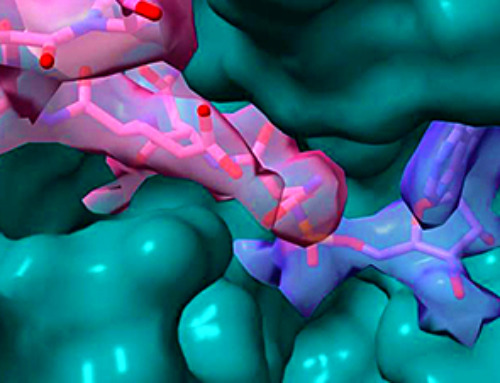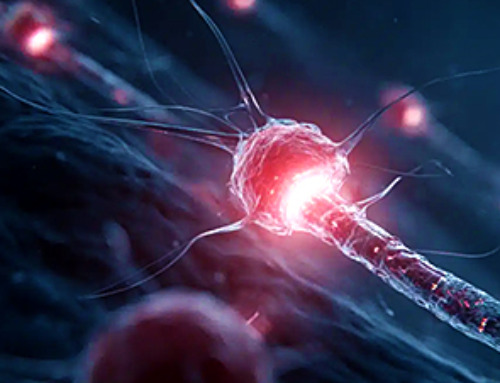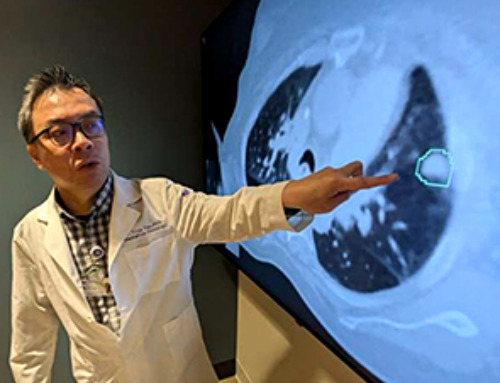UC study of Fernald data links environmental phenols to heart toxicities
Environmental phenols are present in numerous everyday consumer products, serving as preservatives in packaged foods, parabens in shampoos, and bisphenol A (BPA) in plastic dishware. Consequently, people are consistently exposed to these chemicals on a daily basis.
Some of these environmental phenols are known to have cardiac toxicities. Now, an interdisciplinary study involving four University of Cincinnati College of Medicine professors is revealing their adverse impact on the heart’s electrical properties, and the research has been published in the journal Environmental Health.
“This is the first study to look at the impact of phenol exposure on cardiac electrical activity in humans,” said Hong-Sheng Wang, PhD, professor in the Department of Pharmacology, Physiology and Neurobiology and the study’s lead author.
Researchers used data from the Fernald Community Cohort, which includes nearly 10,000 people who lived near the former U.S. Department of Energy uranium processing site at Fernald, outside Cincinnati, and participated in the Fernald Medical Monitoring Program between 1990 and 2008.
Much of the cohort did not experience exposure to uranium beyond the radiation received by the general population. Wang and his team used their data, including biological samples and medical records, in the study so uranium exposure would not be a factor in the findings — making them relevant to the general population. Because urine samples and electrocardiograms, or EKGs, were collected on the same day, the results were significant for analyzing exposure to environmental phenols.
The EKGs, which measure cardiac electrical activities, were read by board-certified physicians, and the urine samples were sent to the Centers for Disease Control and Prevention for exposure analysis.
Findings on the Heart’s Electrical Activity
One goal of the study was to identify any changes in EKG parameters associated with environmental phenol exposure.
The heart is driven by electrical activity, so anything affecting its electrical properties can have a detrimental impact and possibly result in arrhythmias.
The research concluded higher exposure to some environmental phenols is associated with altered cardiac electrical activity.
Researchers found higher exposure to BPA, BPF, and BPA+F in women is associated with a longer PR interval, a delay in the time it takes for electrical signals to move from the atria at the top of the heart to the ventricles.
“Our findings were highly sex-specific,” said Wang. In women, researchers identified an association with longer QRS duration, or contraction of the ventricles, and dysfunction of the electrical impulses of the heart.
“It was particularly pronounced in women with higher body mass indexes,” said Wang.
In men, researchers found higher exposure to triclocarban (TCC), an antimicrobial agent, led to longer QT intervals in the heart — meaning the heart’s electrical system is taking too long to recharge, a situation that can contribute to heart rhythm dysfunction. TCC has since been banned in the United States.
Implications for Heart Health
Wang also pointed out that typical exposure levels alone are unlikely to cause clinically significant heart disease in healthy people.
“These were not dramatic changes that we observed, but moderate changes to cardiac electrical activity,” he said. “However, they were particularly pronounced in certain subpopulations.”
He said the altered cardiac activity could exacerbate existing heart disease or arrhythmias in a patient, especially older adults or those with other risk factors.
“Now there are new chemicals out there, so the next step would be to examine these newer environmental chemicals and to focus on their impact on an individual level in those who are predisposed to heart disease,” said Wang.
Reference: “Association of same-day urinary phenol levels and cardiac electrical alterations: analysis of the Fernald Community Cohort” by Jack Rubinstein, Susan M. Pinney, Changchun Xie and Hong-Sheng Wang, 19 September 2024, Environmental Health.
DOI: 10.1186/s12940-024-01114-x
Other contributors in this study included Susan Pinney, PhD, FACE, professor of epidemiology in the Department of Environmental and Public Health Sciences; Jack Rubinstein, MD, FACC, professor of clinical cardiology in the Department of Internal Medicine; and Changchun Xie, PhD, professor in the Department of Biostatistics, Health Informatics and Data Sciences.
This study was funded by grants from the National Institute of Environmental Health and the University of Cincinnati Center for Environmental Genetics.
News
Team finds flawed data in recent study relevant to coronavirus antiviral development
The COVID pandemic illustrated how urgently we need antiviral medications capable of treating coronavirus infections. To aid this effort, researchers quickly homed in on part of SARS-CoV-2's molecular structure known as the NiRAN domain—an [...]
Drug-Coated Neural Implants Reduce Immune Rejection
Summary: A new study shows that coating neural prosthetic implants with the anti-inflammatory drug dexamethasone helps reduce the body’s immune response and scar tissue formation. This strategy enhances the long-term performance and stability of electrodes [...]
Scientists discover cancer-fighting bacteria that ‘soak up’ forever chemicals in the body
A family of healthy bacteria may help 'soak up' toxic forever chemicals in the body, warding off their cancerous effects. Forever chemicals, also known as PFAS (per- and polyfluoroalkyl substances), are toxic chemicals that [...]
Johns Hopkins Researchers Uncover a New Way To Kill Cancer Cells
A new study reveals that blocking ribosomal RNA production rewires cancer cell behavior and could help treat genetically unstable tumors. Researchers at the Johns Hopkins Kimmel Cancer Center and the Department of Radiation Oncology and Molecular [...]
AI matches doctors in mapping lung tumors for radiation therapy
In radiation therapy, precision can save lives. Oncologists must carefully map the size and location of a tumor before delivering high-dose radiation to destroy cancer cells while sparing healthy tissue. But this process, called [...]
Scientists Finally “See” Key Protein That Controls Inflammation
Researchers used advanced microscopy to uncover important protein structures. For the first time, two important protein structures in the human body are being visualized, thanks in part to cutting-edge technology at the University of [...]
AI tool detects 9 types of dementia from a single brain scan
Mayo Clinic researchers have developed a new artificial intelligence (AI) tool that helps clinicians identify brain activity patterns linked to nine types of dementia, including Alzheimer's disease, using a single, widely available scan—a transformative [...]
Is plastic packaging putting more than just food on your plate?
New research reveals that common food packaging and utensils can shed microscopic plastics into our food, prompting urgent calls for stricter testing and updated regulations to protect public health. Beyond microplastics: The analysis intentionally [...]
Aging Spreads Through the Bloodstream
Summary: New research reveals that aging isn’t just a local cellular process—it can spread throughout the body via the bloodstream. A redox-sensitive protein called ReHMGB1, secreted by senescent cells, was found to trigger aging features [...]
AI and nanomedicine find rare biomarkers for prostrate cancer and atherosclerosis
Imagine a stadium packed with 75,000 fans, all wearing green and white jerseys—except one person in a solid green shirt. Finding that person would be tough. That's how hard it is for scientists to [...]
Are Pesticides Breeding the Next Pandemic? Experts Warn of Fungal Superbugs
Fungicides used in agriculture have been linked to an increase in resistance to antifungal drugs in both humans and animals. Fungal infections are on the rise, and two UC Davis infectious disease experts, Dr. George Thompson [...]
Scientists Crack the 500-Million-Year-Old Code That Controls Your Immune System
A collaborative team from Penn Medicine and Penn Engineering has uncovered the mathematical principles behind a 500-million-year-old protein network that determines whether foreign materials are recognized as friend or foe. How does your body [...]
Team discovers how tiny parts of cells stay organized, new insights for blocking cancer growth
A team of international researchers led by scientists at City of Hope provides the most thorough account yet of an elusive target for cancer treatment. Published in Science Advances, the study suggests a complex signaling [...]
Nanomaterials in Ophthalmology: A Review
Eye diseases are becoming more common. In 2020, over 250 million people had mild vision problems, and 295 million experienced moderate to severe ocular conditions. In response, researchers are turning to nanotechnology and nanomaterials—tools that are transforming [...]
Natural Plant Extract Removes up to 90% of Microplastics From Water
Researchers found that natural polymers derived from okra and fenugreek are highly effective at removing microplastics from water. The same sticky substances that make okra slimy and give fenugreek its gel-like texture could help [...]
Instant coffee may damage your eyes, genetic study finds
A new genetic study shows that just one extra cup of instant coffee a day could significantly increase your risk of developing dry AMD, shedding fresh light on how our daily beverage choices may [...]
